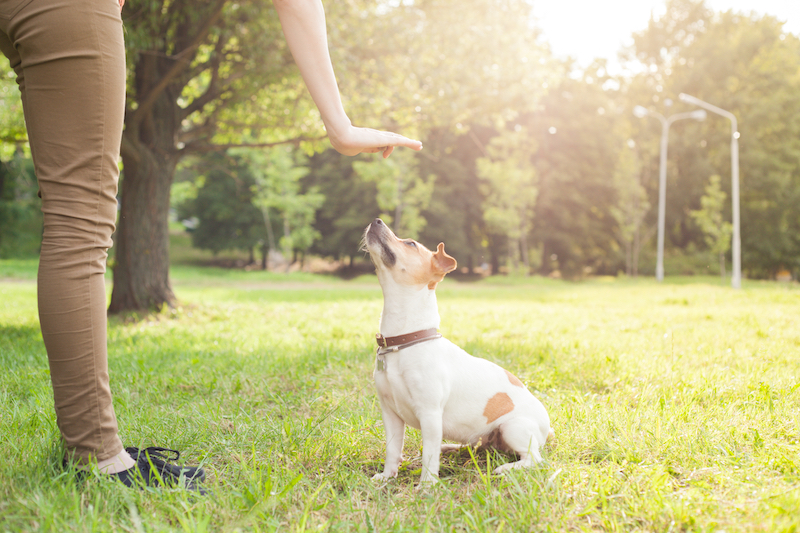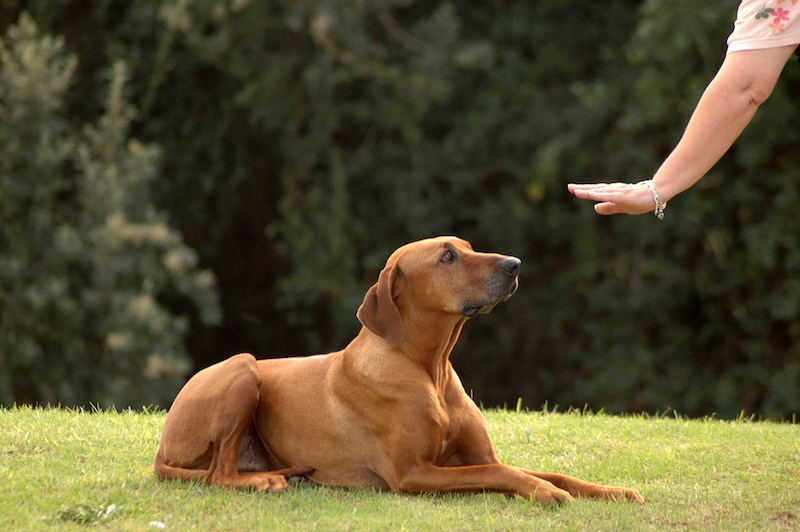Ask any veteran pet-parent and they’ll tell you that training your dog is one of the toughest, but most rewarding things you can do. While it may feel like a time investment upfront, the essential discipline your pet will learn can make both your lives infinitely easier in the long-term. By dodging common doggie behavioural problems, you’ll be able to confidently immerse your pet in a range of different scenarios, knowing that they will never be a risk to others or themselves.
Training commands become even more vital when you and your fur baby are in unfamiliar environments, especially on holidays. The change in their regular surroundings can often cause a little disorientation, but a solid training foundation can keep them calmer, safer and more respectful.
Dog Training 101:
When you start any training regime, it’s important to keep a few golden principles in mind:
- Train in a quiet, controlled place so that you can avoid distractions early on in the process. You want to practise the commands at home before putting them to use publicly.
- Consistency is key! By making training exercises a regular, routine part of your dog’s life, they’ll form good habits much faster.
- Force is never the answer. Pushing your dog too hard at the start, or worse, punishing them for mistakes won’t get you results. Instead, use treats as positive reinforcement for good behaviour.
- Get involved. Your pup needs you to get amongst the exercises with him so they feel playful and rewarding. By keeping the sessions entertaining, short and simple, you can both look forward to making prioress.
- Resist the urge to rush. Remember that you are asking your dog to absorb a lot of new information in a typically short window of time. If you advance into the next step only to find that they are struggling, it’s better to revert to the previous phase than push through without positive reinforcement.
The Training Commands You Need To Know:
Sit:
Why it matters:
The old faithful of your training repertoire, this move is a no-brainer. It’s crucial when you’re in unfamiliar environments, because there are so many stimulating things your dog may want to explore. By mastering the ‘sit’ command, you can avoid any mishaps that can come from potentially boisterous interactions with other dogs, adults and children.
How you teach it:
Hold a treat close to your dog’s nose. Move it upwards so they will follow it with his gaze and naturally move into a seated position. Once their rear is completely lowered to the floor, you can give them the treat and accompany it with plenty of affection. Try this sequence several times each day and begin to introduce it in scenarios where you typically want your dog to remain ‘frozen’ – sitting before meals, before walks and around company.
Stay:
Why it matters:
Much like the sit command, the stay command will be a go-to when on holidays. It promotes self-control and allows you to keep track of your dog in open spaces, near busy roads and around crowds of people. This is particularly important if your pet has loads of energy.
How you teach it:
Once your dog has learnt to ‘sit’, start with this command first and hold a treat close to their nose. While taking a few steps back, give the ‘stay’ command. When they remain stationary, reward with a treat and if they continue to move forward with you, respond with a firm ‘no’ and slowly retreat a few steps away again. Repeat multiple times daily until mastered.
Watch Me:
Why it matters:
This is a super useful command to hold your dog’s attention and help them to avoid the pull of distractions. When mastered, it has a grounding effect and is also a very helpful foundation to teaching them other commands.
How you teach it:
Keep eye contact with your dog. Holding a treat, move the hand from their noise upwards towards your face as you say ‘watch me’. When they maintain eye contact with you during this entire time, reward them with the treat.
Heel:
Why it matters:
This is perfect for a hyperactive dog who wants to run ahead of you on a walk. By teaching them to heel, they will know to walk right beside you until told differently. This command is particularly useful when your dog is unleashed and your hands are full, as you can be confident you can them back to your side quickly and effectively. You’ll want to have mastered the ‘sit’, ‘stay’ and ‘watch me’ commands before attempting this more complex manoeuvre.
How you teach it:
Hold a treat in each hand with your dog in front of you. Hover the right hand treat in front of their noise and lure them behind you until they see the treat in your left hand. This will naturally move them into the heel position on your left side and you can reward this with the corresponding treat. Repeat this multiple times and follow up with the same process without a treat in either hand. When they are following your lure with and without the treat, you will reinforce the behaviour by saying ‘heel’.
To transition into walking in the heel position, do not treat your dog immediately when they stand by your side. Rather take several steps forward and reward them when they follow you whilst maintaining that same distance from you. Repeat this process until your dog can walk ten paces in heel position, multiple times a day.
Drop/Leave It:
Why it matters:
This is particularly useful in unfamiliar environments, be it a friend’s home or a new dog park. Your dog may be very curious about intriguing smells and textures, but this can turn dangerous if they ingest a toxic substance…or simply start to devour your favourite pair of slippers. The ‘drop it’ command will prevent any accidents occurring and keep your pet safe in unfamiliar conditions.
How you teach it:
Keep a treat in both hands and hold in an enclosed fist. Place one fist close to their nose while saying ‘Leave it’. As your dog attempts to lick, sniff and bark to get the treat, simply ignore the behaviours until they cease, then give them the treat from your other hand. Repeat the process until your dog moves away from your first fist as soon as you say Leave it. As you progress, you should only reward your dog when they move away and look up at you upon command.
Other Training Scenarios:
Sleeping:
When staying in holiday accommodation or even at a friend’s house, your furbaby may have to sleep in an unfamiliar setting. In some cases, they may have to be removed from you. In preparation for these scenarios, it’s helpful to practice controlled crying/whinging with your pet before you leave home. Keeping a solid exercise regime while away will also help them manage any anxiety or disorientation more effectively, and an item of clothing that carries your scent will also have a calming effect if placed amongst their bedding.
Riding In The Car:
We’ve previously written all about the causes and cures of motion-sickness here. One of the biggest factors can be negative associations they have with riding in the car, often from early life experience.
To interrupt this cycle, try some of the following training suggestions:
- Spend some time in the car with the engine off
- Work with them to approach the car, without getting in
- Use different vehicles if possible, so they don’t associate with a specific car
- Take shorter trips where possible to grow their tolerance
- By offering a treat when they successfully travel in the car, you will gradually change their association
- Make sure to give them a break between long car trips, of at least a few weeks if possible
- Offer them special toys that are only available to them in the car
- To combat any negative vet-related associations, take plenty of short trips to more relaxed environments like the park.



Am finding this very challenging as we have a rescue dog about 4yrs old. She is a terrier and her will is so strong that nothing will distract her from what her nose tells her. She is manageable in the home although needs constant reminding but not out in the wider world.